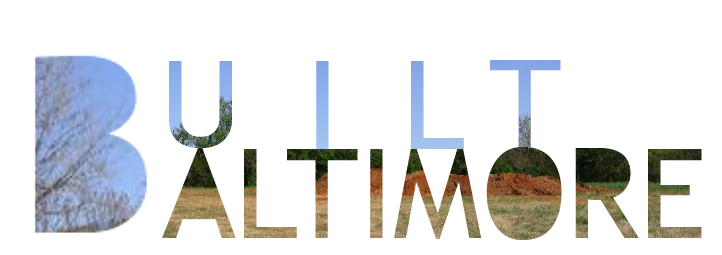Charm City has 6,000 acres of parkland and public space according to the parks site. (not exactly sure what "public space" means. I think this may include cemeteries?).
Anyway, that's like 400 square feet a person! Get out there an use it!
But wait!
Facing budget cuts, the city is canceling its city-hall vegetable garden for 2010. Pools are being shut, just in time for a hot summer, and the city tree program has been pruned--not that too much can be done; the city is simply running out of money.
For taxpayers living in the city's suburban fringe it may not have a very noticeable impact; Suburban private back yards offer plenty of relaxation (there may not even be any parks in walking distance), and less-dense areas usually have plenty of trees.
But for the inner, more urban regions of the city, park-space, recreational amenities and trees are important parts of making a 'liveable' environment.
A liveable urban environment can benefit everyone in a city, state and region by attracting and anchoring businesses, cultural institutions, and creatives, like artists and innovators--the question is, what does it do to the city?
How does park-space define a city place?
~
I feel that corridor-like 'central' parks offer a great alternative focus for a neighborhood or an entire city, when compared to alternatives like 'street centered' designs or geographic centered plans, where the focus of a place becomes a body of water, like a harbor or river.
~
Central Park in New York city is 843 acres, about 15% the size of all the parkspace in Baltimore.
It's an important green space which circulates people up and down the city.
Baltimore is not Manhattan, but it is intriguing to imagine the possibility of a similar central park-like corridor system of parks linking existing Baltimore green space.
How would this look?
Here's Baltimore:
How would this look?
Here's Baltimore:
(Above: Mid and Downtown Baltimore, picture scale about 2.75 miles a side.)
Inner Harbor visible to the south, Druid Hill res. in upper left, roughly centered on the Charles Street Corridor.
Here's Manhattan (same scale):
Central Park is 2.5 Miles long and .5 miles wide. Not many people know that Central Park is maintained by a private, not for profit organization, under contract with the Parks Dept. (source)
Heres Baltimore WITH New York's central park superimposed!
Baltimore folks will note that it stretches from the Inner harbor to Wyman Park in Charles Village! (~26th street!)
(Same photo and scale, Central Park in NYC magically superimposed.)
Baltimore is roughly the shape of an inverted spade. It is mostly bounded by an interstate beltway (695) which forms a rough ring around the city, about 9 miles in diameter.
An imagined green-space network, a "road" of parks and public space connecting existing city green-space. Roughly adding the same park-space as central park.
Maps sourced from GoogleEarth for educational purposes.
Besides ruining much of the cities historical plan, making thousands homeless and razing architecturally significant buildings, a grand park-road would make Baltimore a unique tourist destination, and emphasize its already unique neighborhoods, by creating separate cities-within-cities.
An interesting resource I discovered while searching for maps of Baltimore green spaces is this neat gadget at Open Green Map.
It conveniently maps resources promoting Sustainable Living (Markets etc.), Nature (Parks) and Culture and Society, like museums, in Baltimore.









